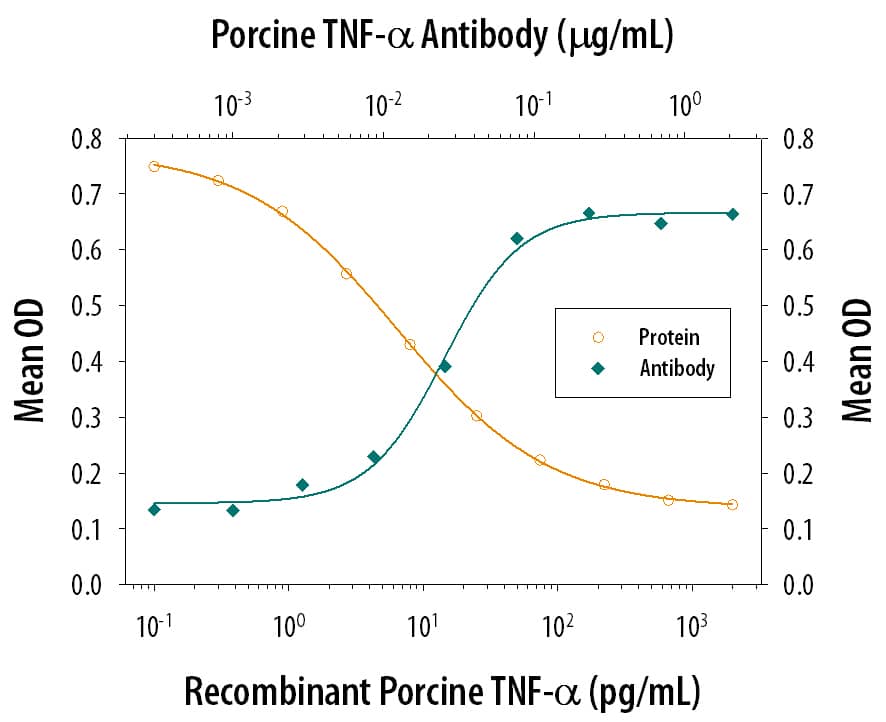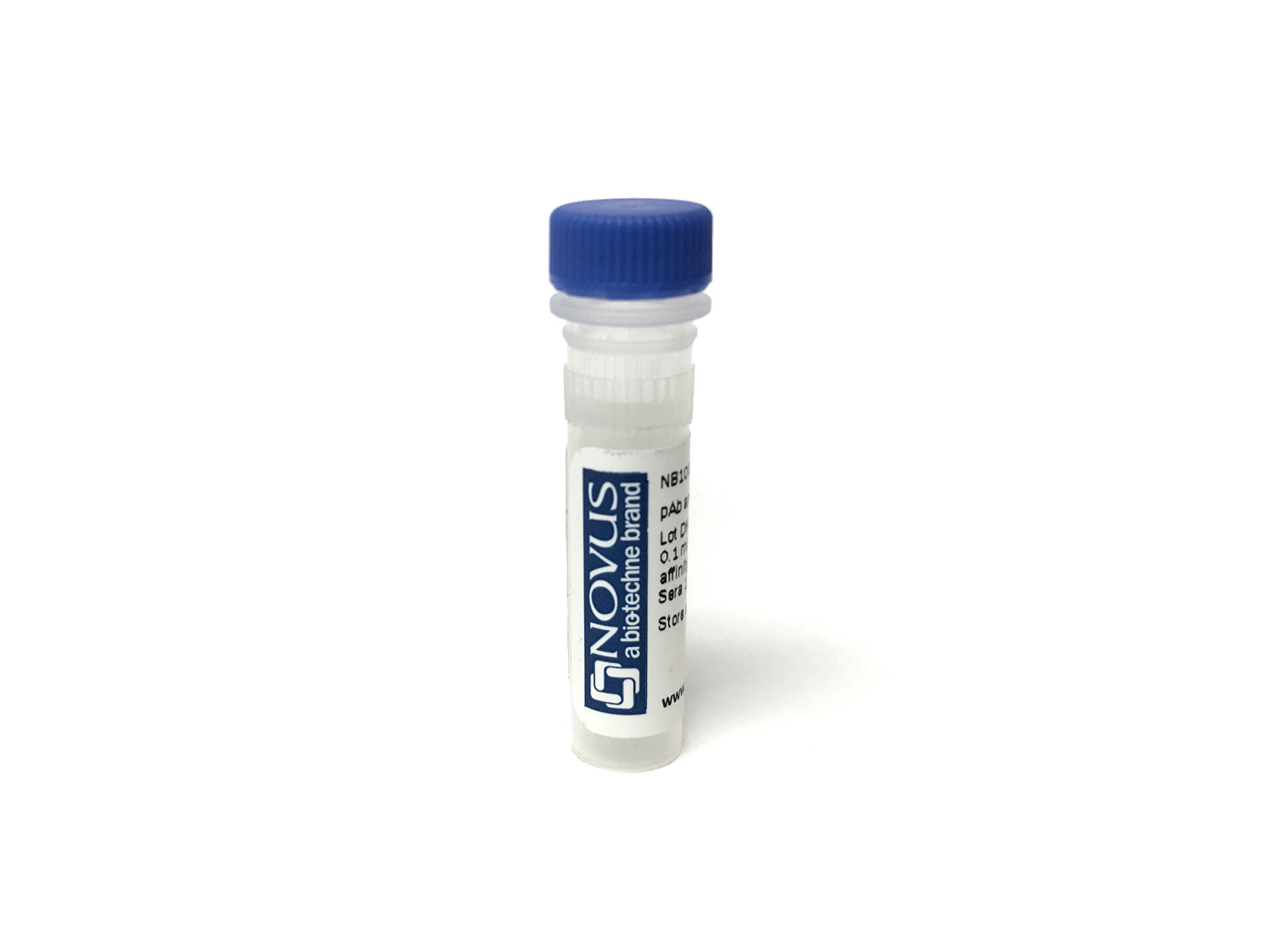TNF-alpha Products
TNF-alpha (Tumor necrosis factor alpha) plays a central role in inflammation, immune system development, apoptosis, and lipid metabolism. TNF-alpha was first identified as a cytotoxic factor produced by macrophages capable of killing mouse tumor cells. It is the prototypic ligand and along with Lymphotoxin-alpha, were identified as the first members of the TNF superfamily. Active TNF-alpha and other members of the TNF superfamily exist as a homotrimer with high structural homology. Receptor binding occurs at the interface of two TNF-alpha monomers. And receptor activation occurs when all three monomer interfaces are engaged with a receptor. For TNF-alpha, receptor binding and activation occurs through TNF R1 or TNF RII, and subsequently leads to activation of NF-kB or MAPK signaling pathways. Another pathway that TNF-alpha can activate utilizes the death domain of TNF RI to induce apoptosis. TNF-alpha promotes the inflammatory response largely through NF-kB signaling, and inhibition of TNF-alpha has proven successful in treating many autoimmune disorders. TNF-alpha is also present on the cell surface as membrane-bound TNF-alpha can induce the lysis of neighboring tumor cells and virus infected cells. TNF-alpha protein is translated as a type II transmembrane protein containing an N-terminal transmembrane domain. The soluble cytokine is released from its cell-anchoring TM domain by proteolytic processing by metalloproteases.
600 results for "TNF-alpha" in Products
600 results for "TNF-alpha" in Products
TNF-alpha Products
TNF-alpha (Tumor necrosis factor alpha) plays a central role in inflammation, immune system development, apoptosis, and lipid metabolism. TNF-alpha was first identified as a cytotoxic factor produced by macrophages capable of killing mouse tumor cells. It is the prototypic ligand and along with Lymphotoxin-alpha, were identified as the first members of the TNF superfamily. Active TNF-alpha and other members of the TNF superfamily exist as a homotrimer with high structural homology. Receptor binding occurs at the interface of two TNF-alpha monomers. And receptor activation occurs when all three monomer interfaces are engaged with a receptor. For TNF-alpha, receptor binding and activation occurs through TNF R1 or TNF RII, and subsequently leads to activation of NF-kB or MAPK signaling pathways. Another pathway that TNF-alpha can activate utilizes the death domain of TNF RI to induce apoptosis. TNF-alpha promotes the inflammatory response largely through NF-kB signaling, and inhibition of TNF-alpha has proven successful in treating many autoimmune disorders. TNF-alpha is also present on the cell surface as membrane-bound TNF-alpha can induce the lysis of neighboring tumor cells and virus infected cells. TNF-alpha protein is translated as a type II transmembrane protein containing an N-terminal transmembrane domain. The soluble cytokine is released from its cell-anchoring TM domain by proteolytic processing by metalloproteases.
Recombinant Monoclonal Antibody.
| Reactivity: | Human |
| Details: | Mouse IgG1 Monoclonal Clone #28401R |
| Applications: | Neut |
| Source: | E. coli |
| Accession #: | P01375 |
| Applications: | EnzAct |
| Reactivity: | Rhesus Macaque |
| Details: | Goat IgG Polyclonal |
| Applications: | WB |
| Reactivity: | Rhesus Macaque |
| Details: | Rat IgG2a Monoclonal Clone #182312 |
| Reactivity: | Cotton Rat |
| Details: | Goat IgG Polyclonal |
| Applications: | WB |
| Reactivity: | Rhesus Macaque |
| Details: | Rat IgG2b Monoclonal Clone #182303 |
| Applications: | WB |
| Reactivity: | Guinea Pig |
| Details: | Mouse IgG1 Monoclonal Clone #569806 |
| Reactivity: | Fish |
| Details: | Mouse IgG Monoclonal Clone #Z74P2C5*A12 |
| Applications: | IHC, WB, ELISA |
| Reactivity: | Porcine |
| Details: | Mouse IgG1 Monoclonal Clone #103314 |
| Applications: | Neut |
| Reactivity: | Porcine |
| Details: | Mouse IgG1 Monoclonal Clone #77938 |
| Applications: | WB |
| Reactivity: | Cotton Rat |
| Details: | Goat IgG Polyclonal |
| Applications: | WB, Neut |
Recombinant Monoclonal Antibody.
| Reactivity: | Human |
| Details: | Rabbit IgG Kappa Monoclonal Clone #cA2 (Infliximab) |
| Applications: | WB, ELISA, Flow, CyTOF-ready, Func |
| Reactivity: | Porcine |
| Details: | Mouse IgG1 Monoclonal Clone #103302 |
| Reactivity: | Guinea Pig |
| Details: | Mouse IgG1 Monoclonal Clone #569826 |
For use with catalog number QTA00C
| Applications: | ELISA, Ctrl |
| Source: | E. coli |
| Accession #: | P19101 |
| Applications: | BA |
| Applications: | Bioactivity, PAGE |
| Applications: | ELISA |
| Applications: | ELISA |
| Reactivity: | Human |
| Details: | Mouse IgG1 Monoclonal Clone #6401 |
| Applications: | Flow, CyTOF-ready, B/N |
| Applications: | AC |
Recombinant Monoclonal Antibody
| Reactivity: | Mouse |
| Details: | Rabbit IgG Monoclonal Clone #R023 |
| Applications: | B/N |
| Reactivity: | Human |
| Details: | Mouse IgG1 Monoclonal Clone #6401 |
| Applications: | Flow, CyTOF-ready, B/N |
Recombinant Monoclonal Antibody.
| Reactivity: | Human, Mouse |
| Details: | Rabbit IgG Kappa Monoclonal Clone #D2E7 (Adalimumab) |
| Applications: | IHC, ELISA, ICC/IF, B/N |




![Immunohistochemistry: TNF-alpha Antibody (Z74P2C5*A12) - BSA Free [NBP2-61611] Immunohistochemistry: TNF-alpha Antibody (Z74P2C5*A12) - BSA Free [NBP2-61611]](https://resources.bio-techne.com/images/products/TNF-alpha-Variant-Antibody-Z74P2C5-A12-Immunohistochemistry-NBP2-61611-img0001.jpg)


![Western Blot: TNF-alpha Antibody (cA2 (Infliximab))ChimericAzide and BSA Free [NBP2-52655] Western Blot: TNF-alpha Antibody (cA2 (Infliximab))ChimericAzide and BSA Free [NBP2-52655]](https://resources.bio-techne.com/images/products/TNF-alpha-Antibody-cA2-Infliximab-Western-Blot-NBP2-52655-img0001.jpg)
![SDS-PAGE: Recombinant Human TNF-alpha Protein [NBC1-18460] SDS-PAGE: Recombinant Human TNF-alpha Protein [NBC1-18460]](https://resources.bio-techne.com/images/products/Recombinant-Human-TNF-alpha-Protein-SDS-Page-NBC1-18460-img0002.jpg)
![ELISA: Mouse TNF-alpha ELISA Kit (Colorimetric) [NBP2-31085] ELISA: Mouse TNF-alpha ELISA Kit (Colorimetric) [NBP2-31085]](https://resources.bio-techne.com/images/products/Mouse-TNF-alpha-ELISA-Kit-Colorimetric-ELISA-NBP2-31085-img0002.jpg)
![ELISA: Monkey TNF-alpha ELISA Kit (Colorimetric) [NBP1-94190] ELISA: Monkey TNF-alpha ELISA Kit (Colorimetric) [NBP1-94190]](https://resources.bio-techne.com/images/products/Primate-TNF-alpha-ELISA-Kit-Colorimetric-ELISA-NBP1-94190-img0001.jpg)

![Neutralization: TNF-alpha Antibody (R023) [NBP2-90547] Neutralization: TNF-alpha Antibody (R023) [NBP2-90547]](https://resources.bio-techne.com/images/products/TNF-alpha-Antibody-R023-Neutralization-NBP2-90547-img0001.jpg)